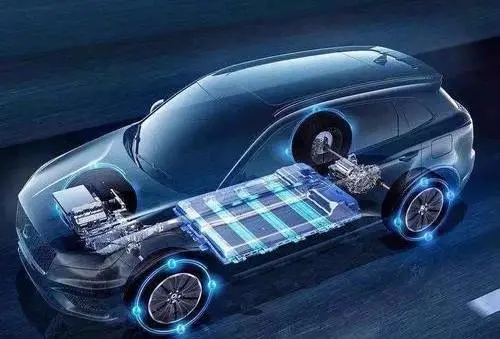In the ever-evolving landscape of the automotive industry, one undeniable trend stands out – the persistent decline in the price of electric vehicles (EVs). While there are multiple factors contributing to this shift, one primary reason stands out: the decreasing cost of the batteries powering these vehicles. This article delves into the reasons behind the declining prices of electric vehicles, emphasizing the need to encourage further investment in battery manufacturing and production.
Batteries: The Power Behind the Price
The heart of an electric vehicle is its battery, and it’s no surprise that the cost of these batteries significantly influences the overall vehicle cost. In fact, more than half (approximately 51%) of an EV’s cost is attributed to the powertrain, which includes the battery, motor(s), and the accompanying electronics. In stark contrast, the combustion engine in traditional vehicles constitutes only about 20% of the total vehicle cost.
Delving deeper into the battery’s cost breakdown, approximately 50% of it is allocated to the lithium-ion battery cells themselves. The remaining 50% encompasses various components, such as housing, wiring, battery management systems, and other associated elements. It’s worth noting that the cost of lithium-ion batteries, widely employed in electronics and EVs, has witnessed a remarkable 97% price drop since their commercial introduction back in 1991.
Innovations in Battery Chemistry: Driving Down EV Costs
In the quest for more affordable electric vehicles, innovations in battery chemistry have played a crucial role. A case in point is Tesla’s strategic shift to cobalt-free batteries in its Model 3 vehicles. This innovation led to a remarkable reduction in sales prices, with a 10% price drop in China and an even more significant 20% price decrease in Australia. Such advancements are instrumental in making EVs more cost-competitive, further broadening their appeal to consumers.
The Road to Price Parity
Price parity with internal combustion vehicles is the Holy Grail of electric vehicle adoption. This landmark moment is projected to occur when the cost of EV batteries falls below the $100 per kilowatt-hour threshold. The good news is that industry experts, as per BloombergNEF predictions, expect this milestone to be reached by the year 2023. Achieving price parity will not only make electric vehicles more economically competitive but also reshape the automotive landscape.
Government Initiatives and Infrastructure Development
Beyond technological advancements, government support and infrastructure development are playing a pivotal role in driving down EV prices. Notably, China has taken bold steps to expand its EV charging network, with an astounding 112,000 charging stations installed in December 2020 alone. This investment in charging infrastructure is essential for making electric vehicles more convenient and accessible.
Encouraging Investment in Battery Manufacturing
To continue the trend of declining EV prices and ensure the sustainability of this revolution, encouraging investment in battery manufacturing is paramount. As battery production scales up, economies of scale will further reduce battery costs. This will lead to more affordable electric vehicles, attracting a broader range of consumers, and ultimately fostering a cleaner and more sustainable automotive future.
In conclusion, the decreasing cost of electric vehicles is primarily driven by the diminishing cost of batteries. Technological advancements, innovations in battery chemistry, and government support for infrastructure development are all contributing factors. To further enhance the affordability and accessibility of electric vehicles, encouraging investment in battery manufacturing and scaling up production is pivotal. This collaborative effort will not only drive down prices but also accelerate the global transition to cleaner and more sustainable transportation solutions.
————————
The information provided by Styler(“we,” “us” or “our”) on https://www.stylerwelding.com/(the “Site”) is for general informational purposes only. All information on the Site is provided in good faith, however, we make no representation or warranty of any kind, express or implied, regarding the accuracy, adequacy, validity, reliability, availability or completeness of any information on the Site. UNDER NO CIRCUMSTANCE SHALL WE HAVE ANY LIABILITY TO YOU FOR ANY LOSS OR DAMAGE OF ANY KIND INCURRED AS A RESULT OF THE USE OF THE SITE OR RELIANCE ON ANY INFORMATION PROVIDED ON THE SITE. YOUR USE OF THE SITE AND YOUR RELIANCE ON ANY INFORMATION ON THE SITE IS SOLELY AT YOUR OWN RISK.
Post time: Nov-03-2023









